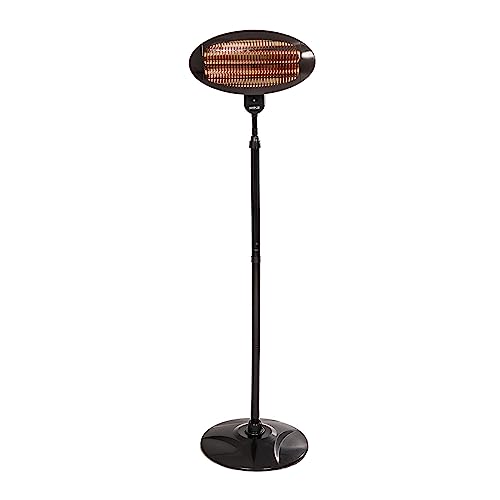How to Choose a Patio Heat Lamp Electric
When you want to heat your patio, you've got numerous options. Electric heaters are more efficient than propane models that require fuel refills. They can be heated immediately by pressing a button or flicking the switch.
These units also don't emit gasses that could cause health risks. Some offer adjustable heat settings for different distances.
Heater Type
With the appropriate patio heater, you will be able to comfortably relax in your outdoor living spaces into the night, and throughout the seasons. There are several types of patio heaters, including freestanding propane and natural gas models, as well as wall- or ceiling-mounted electric radiant heaters. Your choice will depend on the size of the area, the power sources available, and your personal preferences.
The majority of patio heaters use electricity, natural or liquid gas to generate heat. They emit heat through convection heating as well as radiant heating. la hacienda electric patio heater is measured in watts and then converted to British thermal units (BTUs) for comparison. Some models have adjustable heating settings to allow for greater flexibility.
Patio heat lamps combine an electric burner on a pole, and a perforated screen that reflects flames and sends heat downwards to warm people, objects and furniture. Some outdoor heat lamps have reflective reflectors that sit on top of the burner that can be silvered to reduce the amount that heat is lost upwards.
The most common type of patio heater, a gas patio heater is typically found in outdoor seating areas at bars and restaurants since they generate a lot of heat quickly and distribute equally across all directions, making them ideal for warming tables. These patio heaters can be portable and run off propane tanks or plumbed into your natural gas line with the latter providing more convenience and lower upfront installation costs but requiring an ongoing cost of fuel.
A increasing number of homes are fitted with natural gas lines, making these the ideal solution for those who prefer gas-powered patio heaters. They're easy to install, but require a specialized and functioning gas line in order to perform in a safe manner. There are portable natural gas heaters that come with extension hoses that can aid in overcoming this issue, but they can create a tripping hazard and an additional fire danger when not in use.
Safety
Electric patio heaters can be used safely in enclosed areas since they permit heat to radiate upwards and not outwards. However, they're not intended to be used under an open roof; the heater should be set at minimum 18" from the walls adjacent to it or 6" from the ceiling to prevent fire hazards.
The propane and gas patio heaters can only be used in enclosed areas that have an enduring cover made for outdoor use. These covers are usually made of fire-resistant fabrics and have a roof which can be closed. These types of patio heaters pose safety concerns related to the fumes and flames they produce. They should be kept away from flammable objects, such as curtains and chairs.
Follow the safety and instructions guidelines of the manufacturer when installing a patio heater or heat lamp. Be sure to select one that has UL and CSA certifications, and read the owner's guide carefully. Be especially careful around children and pets and make sure the heater is not in their reach while it's running. Some free-standing patio heating devices like EUROM's have an automatic tipping safety that shuts down the device if it falls.
If your patio heater is connected to a natural-gas line, you should be sure to check the condition of the line regularly and test it by a certified professional for leaks. If the line has to be replaced, be certain to get a licensed plumber. A professional is able to determine if the line needs to be run through an underground pipe or not. In addition, a professional can make sure the heater in the patio is plugged into an outlet that's GFCI (ground fault circuit interrupter) designed to guard against electrical fires and shocks.

Installation
The size of the patio heater is positioned determines the amount of heat it will radiate into the space. The heater should be placed away from surfaces like wood and plastic that can deform. Depending on the model of heater you can decide to mount it on a wall or structure using traditional mounting brackets. Certain models come with soft start, which lowers the current peak to safeguard your circuits.
